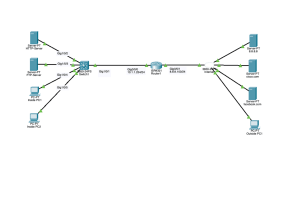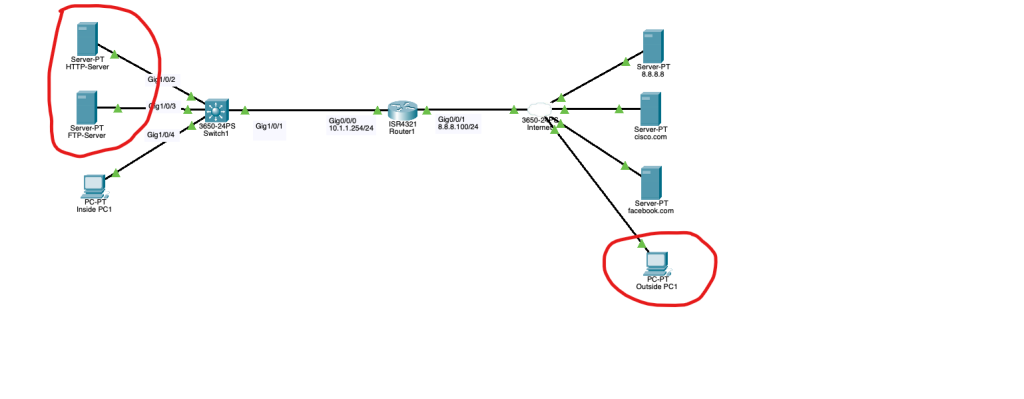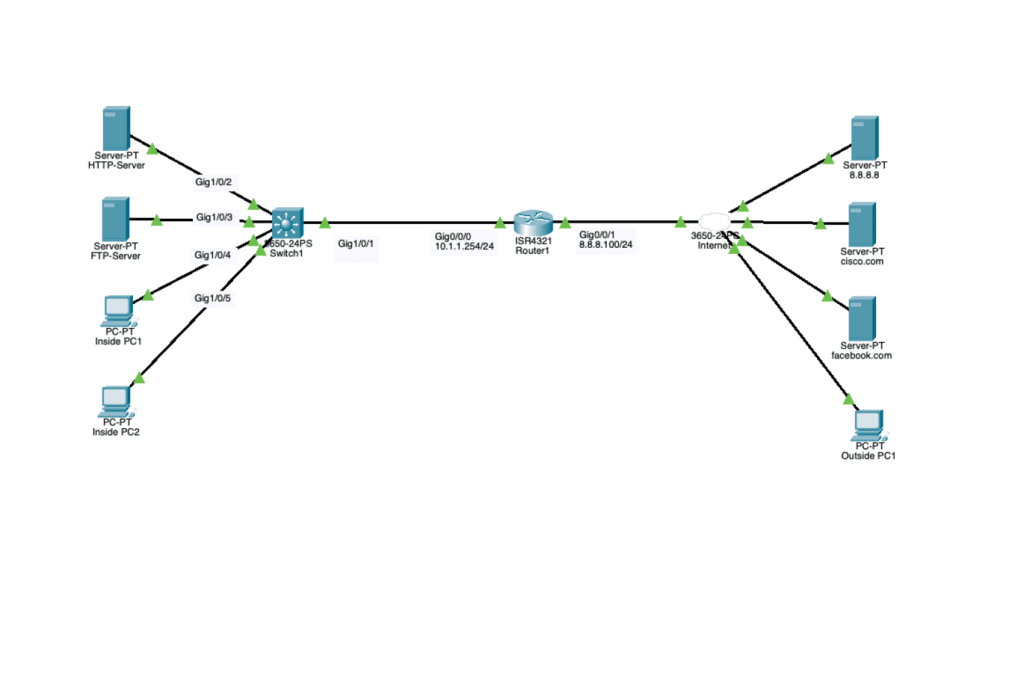
It’s a way to map multiple private addresses inside a local network to a public IP address before transferring the information onto the internet. All this is implemented in the router or the edge platform to connect private networks to public networks like the Internet.
With NAT, an organization needs one IP address or one limited public IP address to represent an entire group of devices as they connect outside their network. Port Address Translation (PAT) enables one single IP to be shared by multiple hosts using IP and port address translation.
There are three types of NAT:

For the Lab above, a static NAT is configured for the Servers so the outside PC can access them through HTTP, HTTPS, or FTP. The IP address for Server HTTP and FTP is ‘natted’ to the Router1

For the Lab above, Static NAT is used for the Servers for Outside PC1, and Dynamic NAT is used for the Inside PCs for them to connect to the internet (cisco.com or facebook.com)
This is a summary of my documentation of the lab.
The course can be found at Udemy by David Bombal.